Intramuros: A Living City
10 December 2021
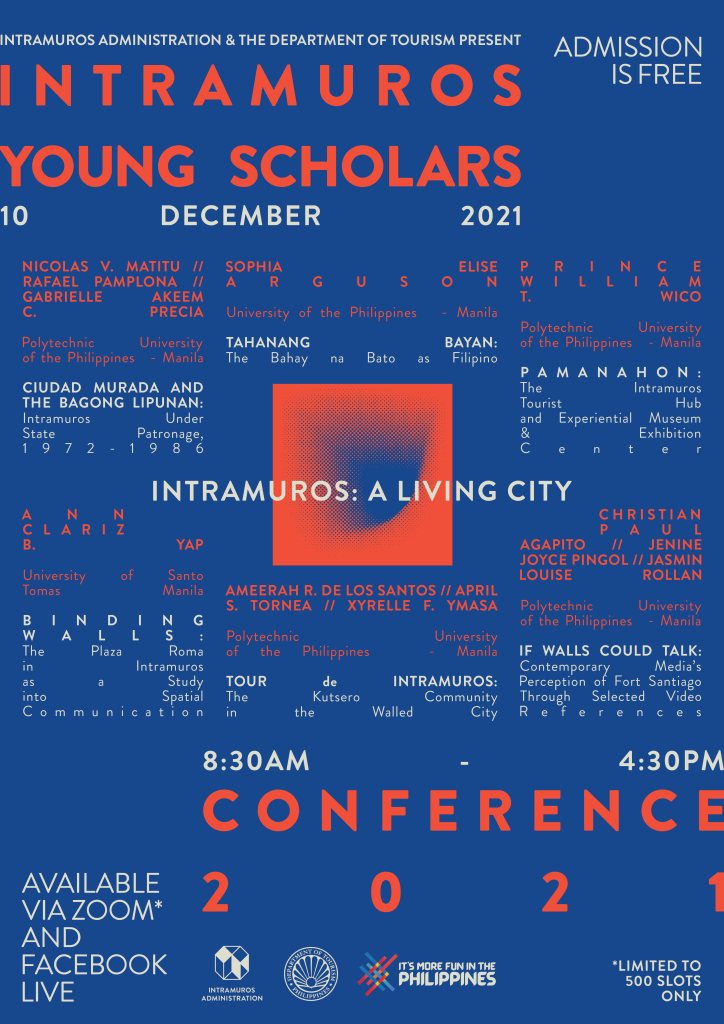
Overview
Intramuros’ place in history is cemented by its heritage as one of the world’s first globalized cities in the Modern Era. However, beyond the pomp and grandeur is a city with ordinary people. While literature on the sublimity of Intramuros is countless, not much narrative about the everyday lives of its people exists. As such, the 3rd Annual Young Scholars Conference will be a celebration of both the grand and the mundane–a discussion on everyday life, way of living, communities, and peoples in Intramuros.
The Conference, which will run for two days, will serve as a venue where emerging professionals with interest on cultural heritage can share their studies on Intramuros and its heritage as a living city. It will feature a total of six research papers in the span of two days, and shall be entirely staged via online means. The conference shall be open to the public free of charge, and everyone invited to attend and participate.
VIEW CONFERENCE PROCEEDINGS REPORT HERE
Opening Lecture: Intramuros Kami: The Community of the Walled City
By Jeffrey Yap
Paper no. 1
Ciudad Murada and the Bagong Lipunan: Intramuros Under State Patronage, 1972-1986
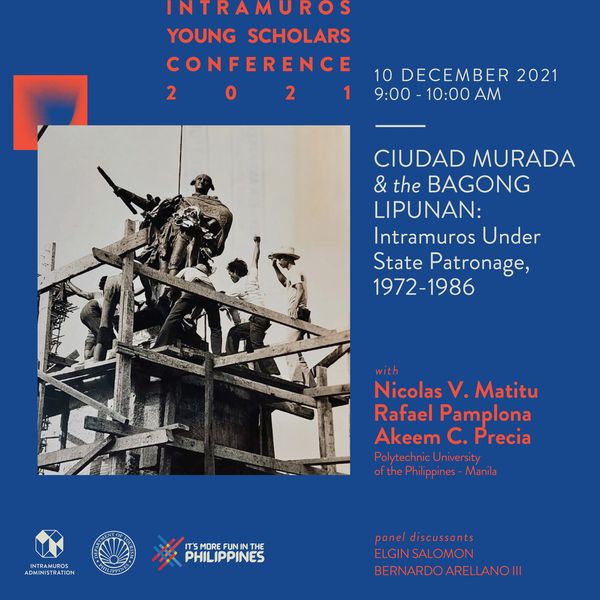 | 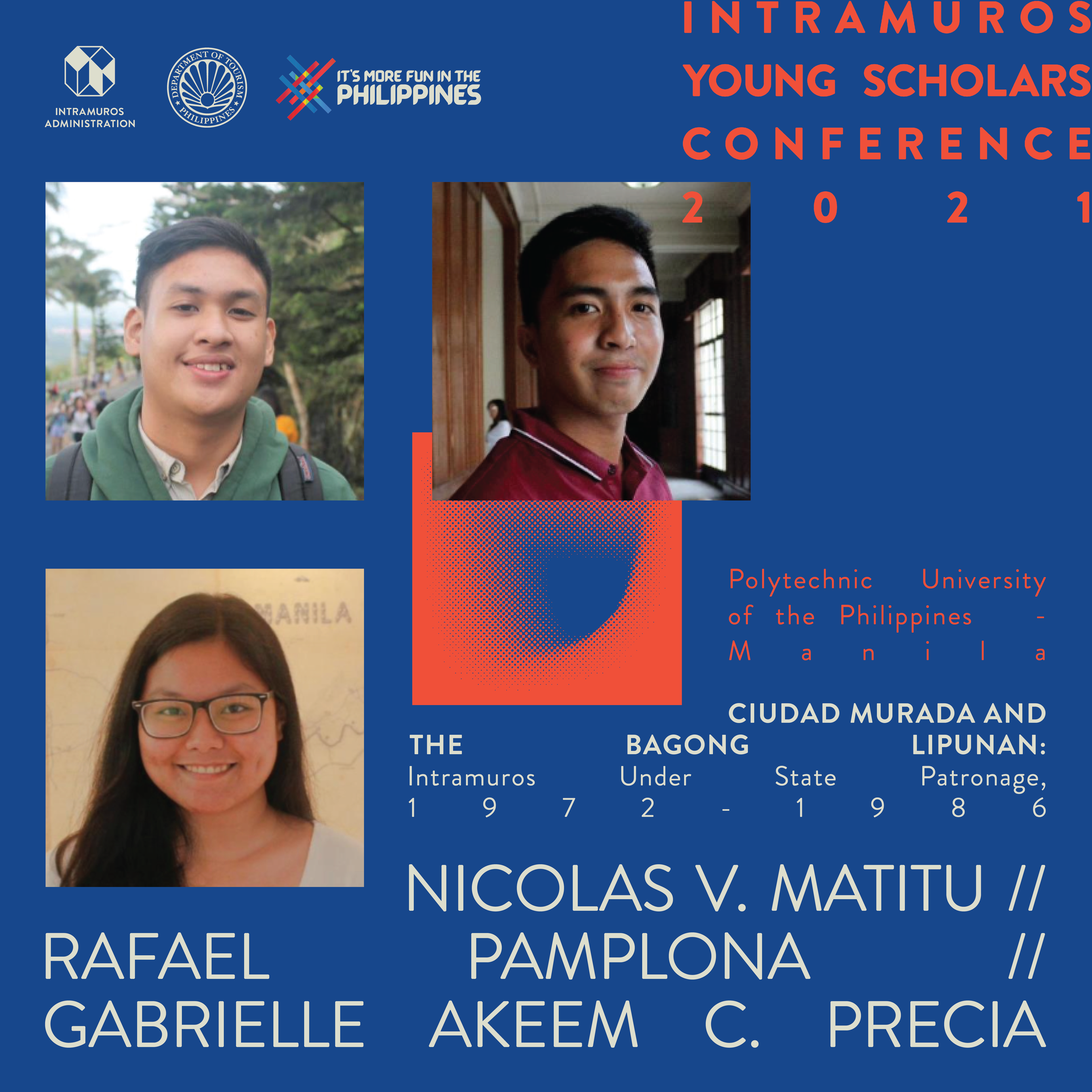 |
Abstract
Intramuros has been a part of the cultural enrichment for nation-building during the period of New Society through the enactment of P.D. No. 1616. However, none of the previous studies have looked into its role in the said period. This paper aims to reconstruct the time and contextualize the creation of PD 1616 by describing the prevailing ideas, values and political climate of the period. This paper also aims to analyze how the State utilizes Intramuros for its vision of the Bagong Lipunan. This study attempts to trace the responses to the identity crisis and nation-building before and during utilizing the Bagong Lipunan using the Challenge and Response theory to explain how the Bagong Lipunan used the Intramuros as one of the responses in the challenges.
The researchers were able to found that the government defined the Filipino identity as purely indigenous through the speeches of President Marcos. The State appropriated Intramuros as Filipino for the purpose of Bagong Lipunan which can be seen in the laws implemented for the Walled City while reviving its colonial ambiance. The findings show that restoration of Intramuros runs contrary to the goal of nation-building that can be observed in the projects being done. These manifestations enable the researchers to conclude that these contradictions are the microcosm of the Filipino identity itself: unstable, undefined, and arbitrary. It provides an alternative view of “Filipino-ness” contrary to the nativist interpretation of the State. Therefore, the Walled City may serve as a material representation of Filipino identity whereas the indigenous and the foreign meets.
Keywords
Intramuros, Bagong Lipunan, Filipino identity, State Patronage.
Panel Discussants
- Elgin Glenn Salomon, University of the Philippines Diliman
- Bernardo Arellano III, M.A., University of the Philippines Visayas
About the Authors of Paper no. 1
Nicolas V. Matitu is an undergraduate student of Bachelor Arts in History in the Polytechnic University of the Phillipines (Manila). He’s an active member of Samahan ng mga mag-aaral ng Kasaysayan, the official organization of PUP history students. His interest evolves in reading books that focuses on the American period in the Philippines, World War II, and Contemporary History which are also his research interests.
Rafael Pamplona is an undergraduate student from the Polytechnic University of the Philippines and taking up Bachelor of Arts in History. Under this program, he is able to garner historical skills in writing research and conference papers. Some of his write-ups such as Ang Hermandad de la Misericordia bilang Katuwang ng Pamahalaang Espanyol sa Gampaning Sosyo-Ekonomiko in 2019 were presented in the annual national conferences and webinars. His research interests are Colonial Philippines, Social History, Philippine Historiography, Philippine History of Ideas, and Identity Politics. His favorite hobby is to read books, that is why he also held extracurricular position of being a college librarian and it became his spare time of reading scholarly works that fueled the aforementioned interests.
Gabrielle Akeem Precia is a third-year BA History student at the Polytechnic University of the Philippines. Her college program enables her to hone historical and research writing skills. One of her accomplishments is her paper on Benguet Road: Mga Manggagawa at Implikasyon sa Ilalim ng Pamahalaang Kolonyal, 1903-1915 written in 2020, was presented in a research symposium. Akeem’s research interests are Philippine Cultural History, Local History, and Ethnic History that prompted her to explore uncommon topics such as how the indigenous peoples managed to survive during the Japanese occupation. She is also an active member of PUP Samahan ng mga Mag-aaral ng Kasaysayan. Through her active engagement in this organization, her hobby in photography has developed by her experience in capturing the significant moments of the events organized by PUP Department of History.
Paper no. 2
Tahanang Bayan: The Bahay na Bato as Filipino
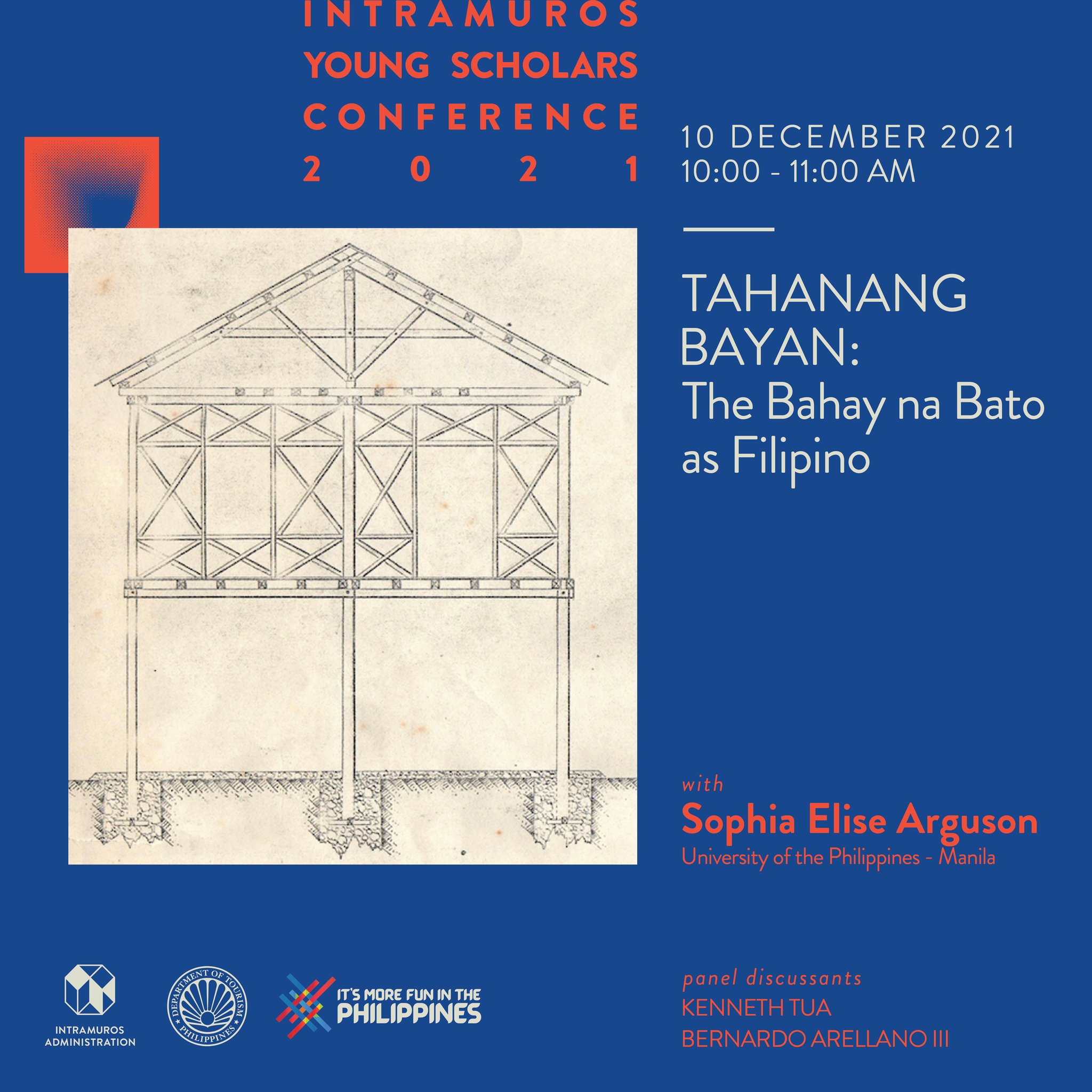 | 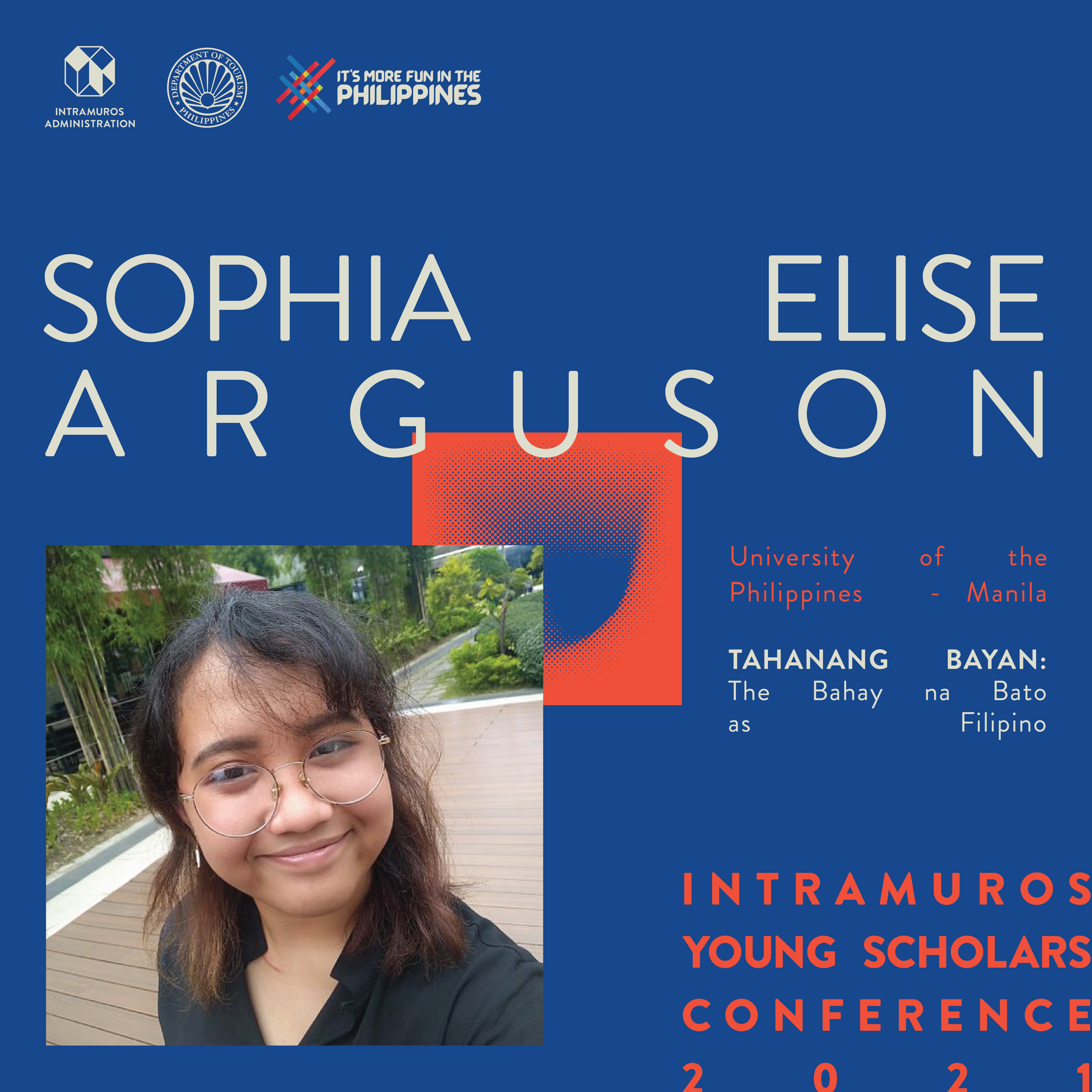 |
Abstract
The Philippine archipelago is characterized by its tropical climate and rich geographical terrain which led to the diverse development of human settlements and distinct architecture that reflected on the social and cultural aspect of the ethnic native inhabitants even before the Spanish colonization. The arrival of the Spanish conquistadors greatly influenced the development of building design and construction, including the development of the bahay na bato.
The study compared the different definitions of the bahay na bato and its aspects that identifies as Filipino. A comparative research method and case study bounded by the bahay na bato and its connection to Filipino history, heritage, and identity was employed. The research made use of documented materials and references accessible online.
The research found that unlike description from mainstream literature, the bahay na bato is not foreign and that despite its foreign influences, it stems and identifies as Filipino. The bahay na bato is a Filipino structure developed during the Spanish colonial era, adapted from the local bahay kubo as evidenced by its skeletal structure being a house on stilts. Proving that the bahay na bato is Filipino was a step forward in reclaiming our independent existence as a people—one with rich culture, tradition, and heritage long before our islands were colonized. The new Filipino nation that emerged after three centuries of Spanish rule is not immune from outside influences. But foreign influences should not eclipse what is native. Historical and cultural understanding allows us to affiliate with our culture better, thus providing us a perspective that transcends the self and incorporate a larger social dimension to our individual experiences.
Keywords:
Bahay na bato; Bahay kubo; Nationalism; Filipino architecture; Spanish colonial architecture; Filipino culture.
Panel Discussants
- Kenneth J. Tua, UAP, MSc-MA DYCLAM+, MA CDIR, International Council on Monuments and Sites
- Bernardo Arellano III, M.A., University of the Philippines Visayas
About the Author of Paper no. 2
Sophia Elise “Faye” Arguson is a BA Philippine Arts (Cultural Heritage and Arts Management) undergraduate student at the University of the Philippines – Manila. Her interest in Philippine history, culture, and the arts allows her to excel in both academic and creative writing. Among her personal achievements include her paper on Post-war Development and Reuse of the First United Building, Regina Building, and Calvo Building in Calle Escolta, Binondo, Manila written in 2019, as well as her one-act play, Ang Inyong Mga Anak written in 2021. Faye was the former Councilor for Culture and the Arts for the UP Manila University Student Council, and is currently the Officer for Education and Research for the UPM Museum Volunteer Program, and the Vice Chairperson for Externals for Salinlahi UPM, the home organization of BA Philippine Arts students.
Paper no. 3
Binding Walls: The Plaza Roma in Intramuros as a Study into Spatial Communication
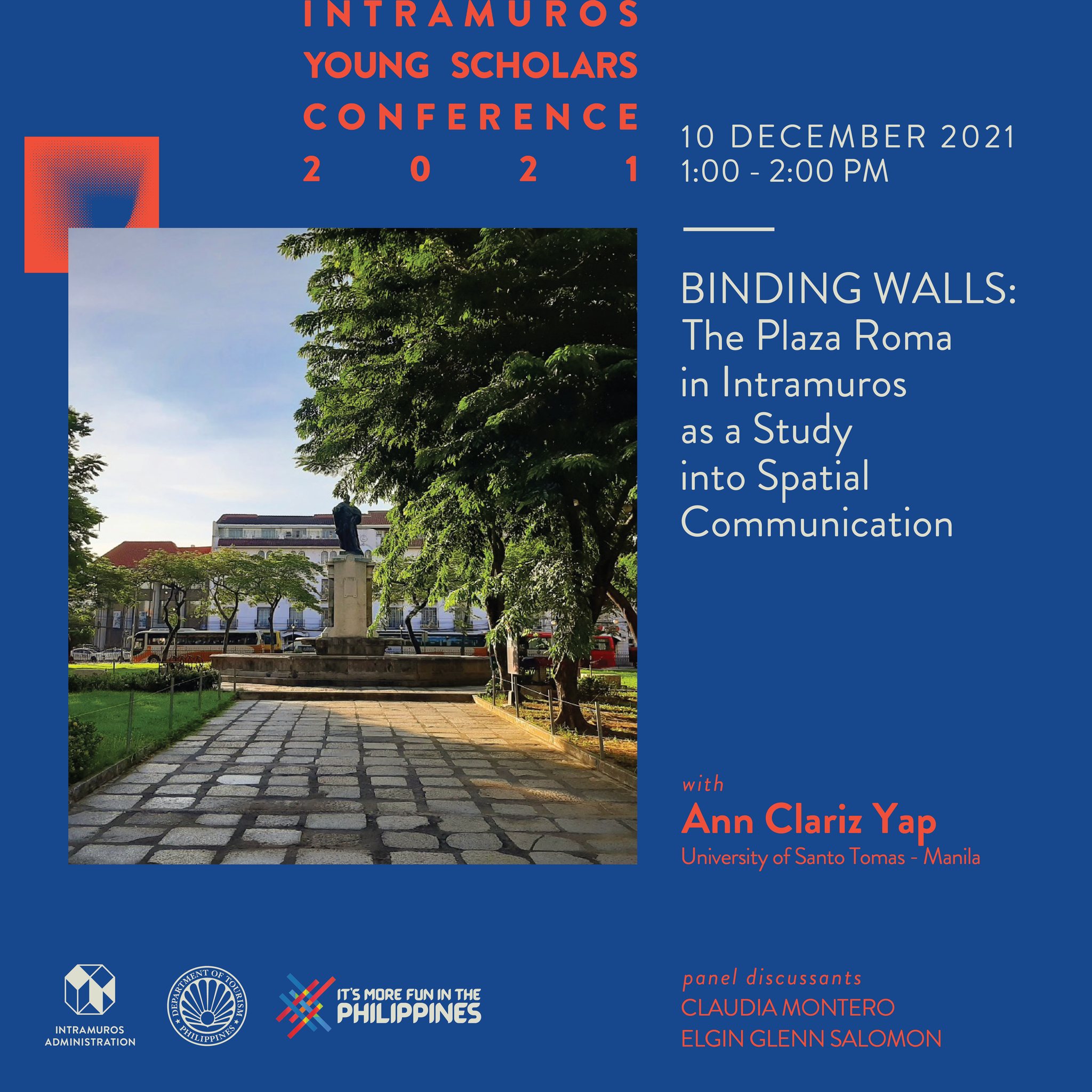 | 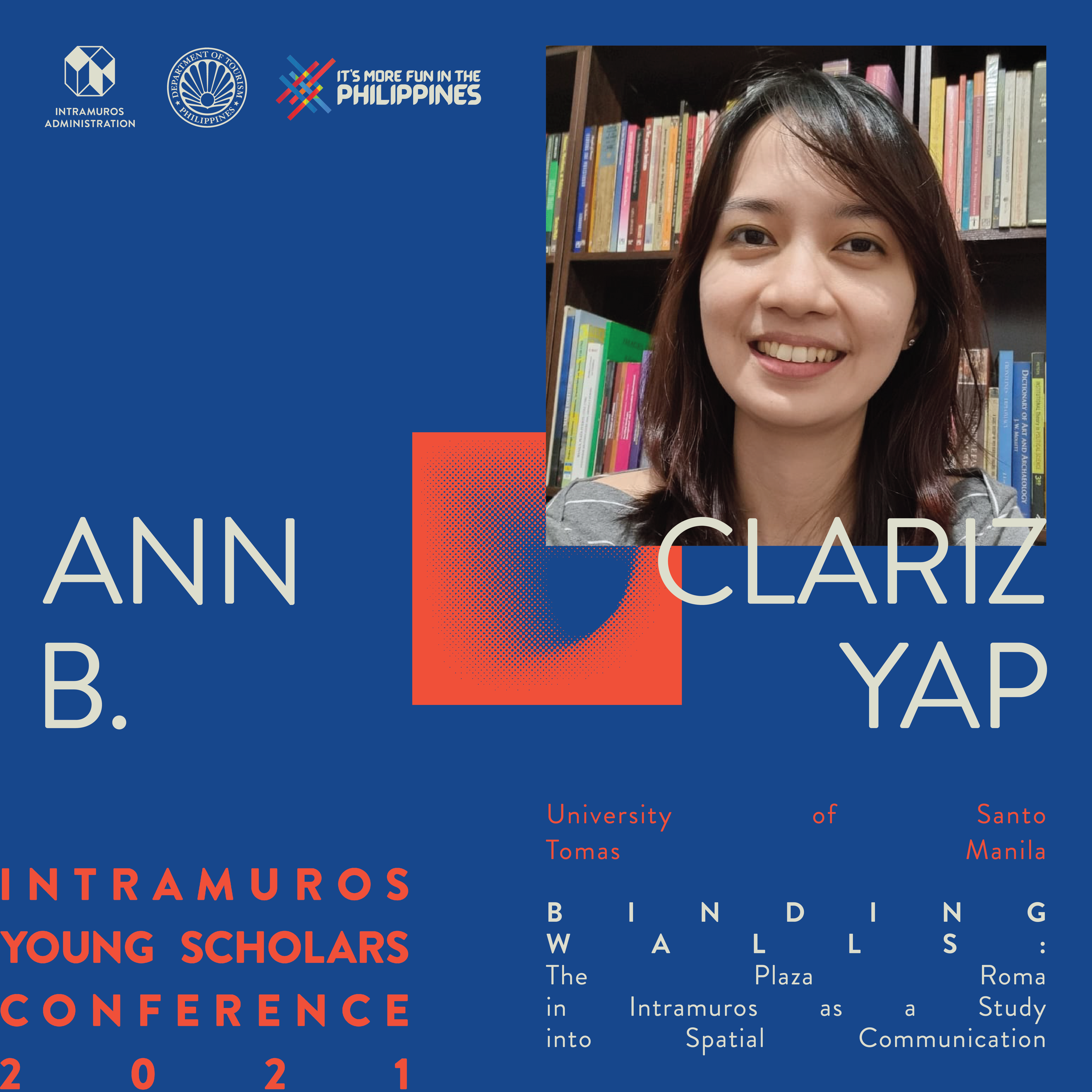 |
Abstract
This is a qualitative communication research about Plaza Roma, Intramuros, Manila to primarily establish that space may be a subject of communication research. In relation, it aimed to find out how Plaza Roma served as a communicative space: (1) according to the spatial theory of Henri Lefebvre; (2) That semiotically work in terms of Charles Sanders Peirce’s semiotic model; and (3) to its stakeholders. It used the Lefebvrian space theory and Peircean semiotics in examining documentary data; and the communication aspect of the said theories in assessing interview information from respondent stakeholders. It was carried out in the main assumption that Plaza Roma in Intramuros, a local space, communicates through signs, the past and present state of power manifestation through the elements that had and have been present in it throughout the periods of Philippine history. It was able to establish that the communicative capacity of Plaza Roma may be determined: (1) through its elements that represent each moment of the spatial triad, (2) through each corresponding component of the semiotic triangle, and (3) through the views of its stakeholders.
Keywords
Space, Semiotics, Communication, Representations of Space, Representational Space, Spatial Practice, Representamen, Object, Interpretan
Panel Discussants
- Claudia Isabelle V. Montero, U.A.P., M.Arch., M.Phil., The Chinese University of Hong Kong
- Elgin Glenn Salomon, University of the Philippines Diliman
About the Author of Paper no. 3
Ann Clariz Yap earned her degree of Masters of Arts in Communication at the University of Santo Tomas (UST). She was also a graduate of Bachelor of Arts, Major in Journalism at UST. She is a Presidential Electoral Tribunal Judicial Staff Officer at the Office of Associate Justice Alfredo Benjamin S. Caguioa at the Supreme Court. Yap’s career focus revolves in the fields of communication and information. Presently, she mainly does editing and research in her office of affiliation. She can also carry out writing and speaking tasks. She also takes interest in the arts. She looks up to Her Royal Highness, The Duchess of Cambridge, and Hollywood celebrity Dakota Johnson, who are art enthusiasts themselves. Learning that the Duchess of Cambridge earned her degree on History of Art, Yap was inspired to do this research about Intramuros which itself is historic and artistic, and also holds special personal memories.
Paper no. 4
Tour de Intramuros: The Kutsero Community in the Walled City
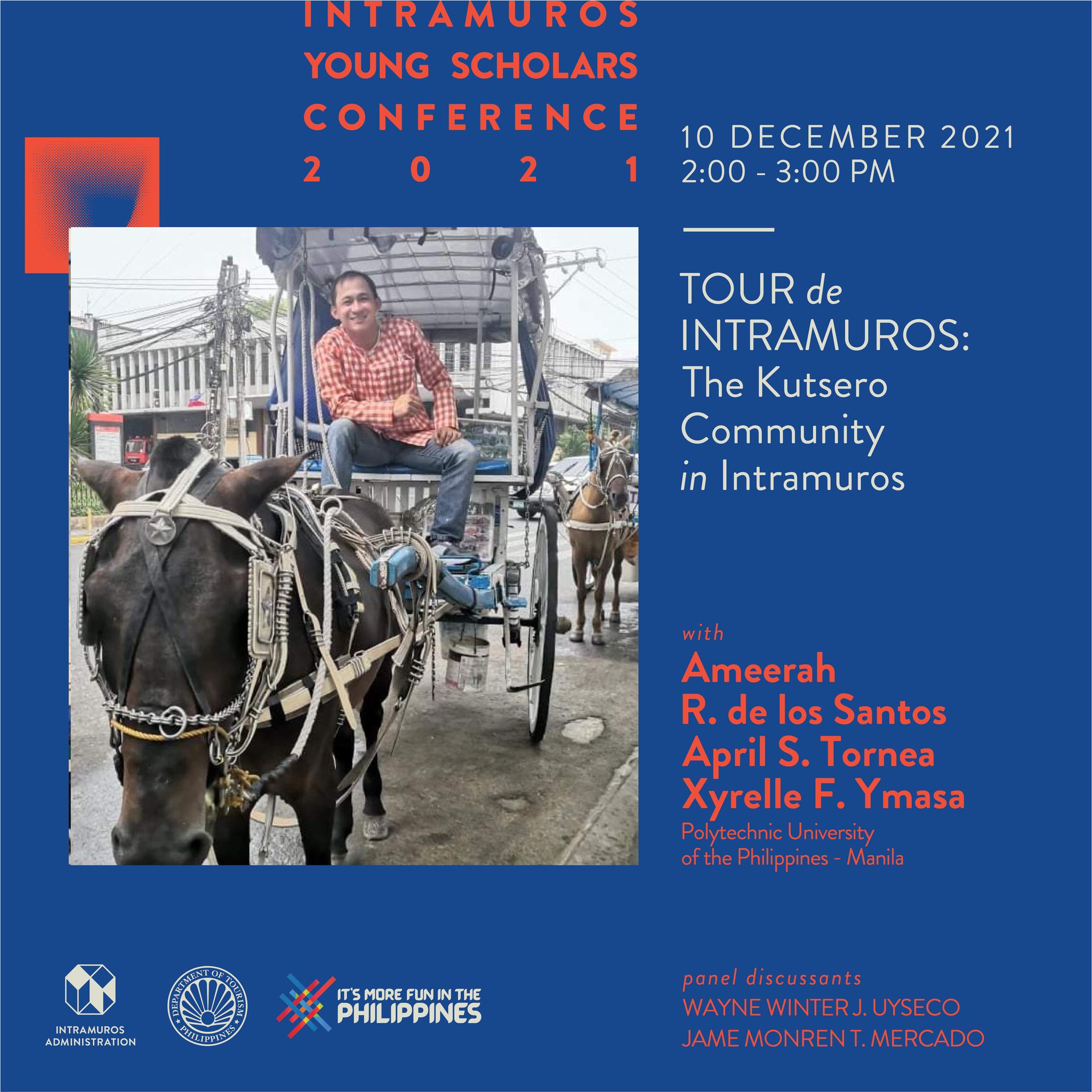 |  |
Abstract
This paper discusses the role of kutseros and the horse-drawn carriages also what we call kalesa following the Intramuros’ image. It proposes the narratives of kutsero community and how their job is significant to the institution’s popularity. Given its historical significance, how kalesa was introduced by the Spaniards in the 18th century and how cocheros treated in the period of American colonial ruling. This paper used Situated Learning theory and Community of Practice developed by Jean Lave and Etienne Wenger, which the acquisition of knowledge relies to the social interactions. To understand the kutseros’ narrative and experience, this paper used interview as a method of data gathering. Through this process, the researchers found out that the kutseros not only filled with the experience they gained from their family background but also learned how to manage horses from feeding to taming them. They also gained additional knowledge from the seminars conducted by the Department of Tourism as well as were guided by the Intramuros Administration. This paper was able to modify the importance of kutsero as a job and how these profound actors help reshape Intramuros’ image.
Keywords
Kutsero; Kutsero Community; Kalesa; Intramuros; Situated Learning Theory And Community Practice
Panel Discussants
- Wayne Winter J. Uyseco, M.A., Far Eastern University Manila
- Jame Monren T. Mercado, M.C.H.S., University of Santo Tomas Manila
About the Authors of Paper no. 4
Ameerah R. Delos Santos is currently an undergraduate History Major student at the Polytechnic University of the Philippines – Manila (PUP). As university scholar, she has huge interests in the fields of film history, social history, and cultural studies. Her researches dwell on the pre-colonial Philippines, 20th century Southeast Asia, and Heritage preservation. She also experienced doing an ethnography about the Lumad and the Buddhist Temple in Manila.
April S. Tornea is an undergraduate of Bachelor of Arts in History in Polytechnic University of the Philippines- Manila. She has great interests in the study of military history, folks and beliefs most especially in Visayan region. In her three years of the chosen program, She had experienced doing ethnography as well as organizing and facilitating seminars that she believe will help her in her future plans. She is also a member of the YFC, an organization outside of the Univsersity which she was able to do social works such as visiting and entertaining children with disability.
Xyrelle Ymasa is a BA History undergraduate student at the Polytechnic University of the Philippines – Sta. Mesa, Manila. She was a former student librarian at the PUP CSSD Library and Learning Resources Center, a member of Samahan ng mga Mag-aaral sa Kasaysayan PUP, and as one of the committee heads during conferences and seminars, she is an experienced facilitator. Her interest and researches dwell particularly in Pre-16th Philippines, Philippine colonial history, and World War II.
Paper no. 5
If Walls Could Talk: Contemporary Media’s Perception Of Fort Santiago Through Selected Video References
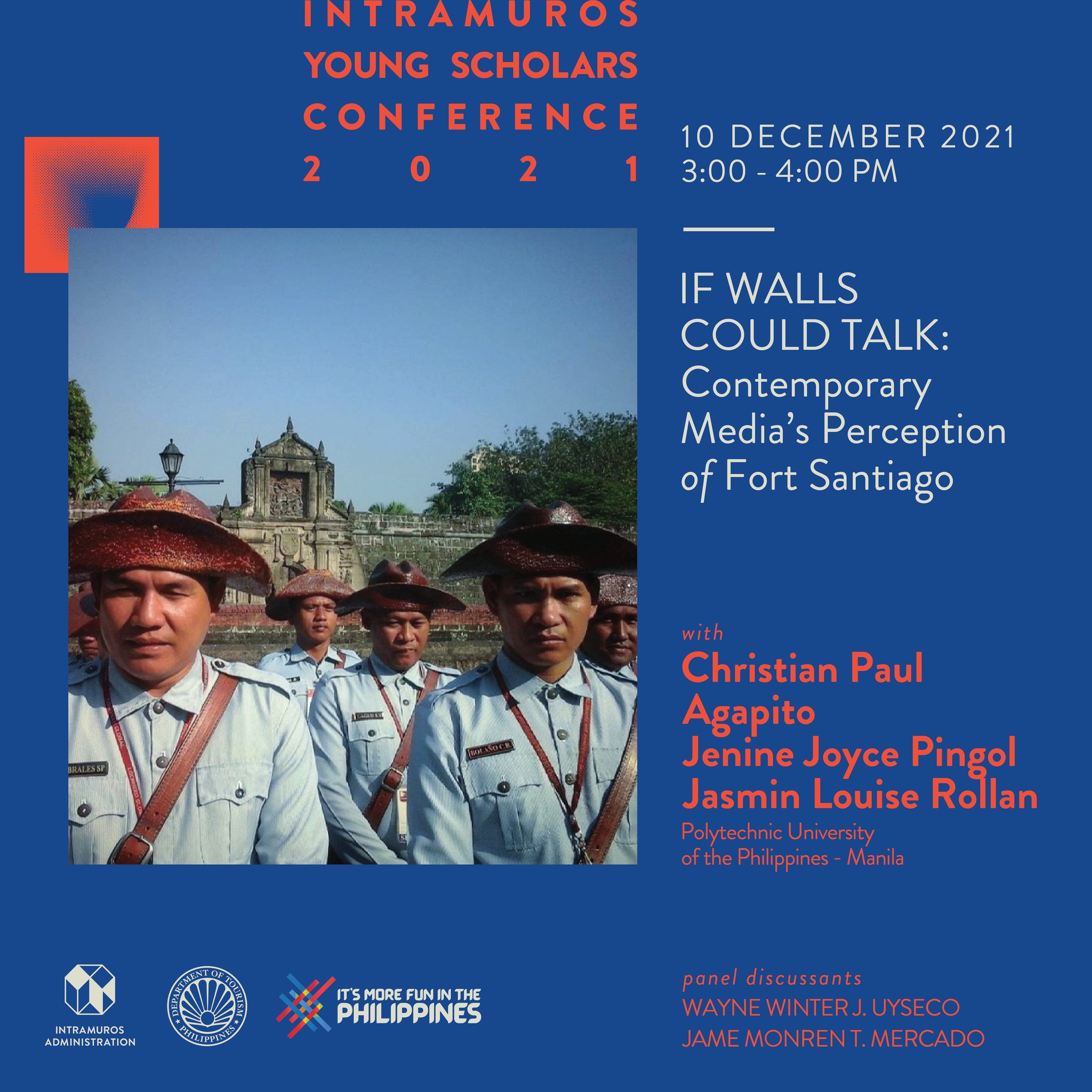 | 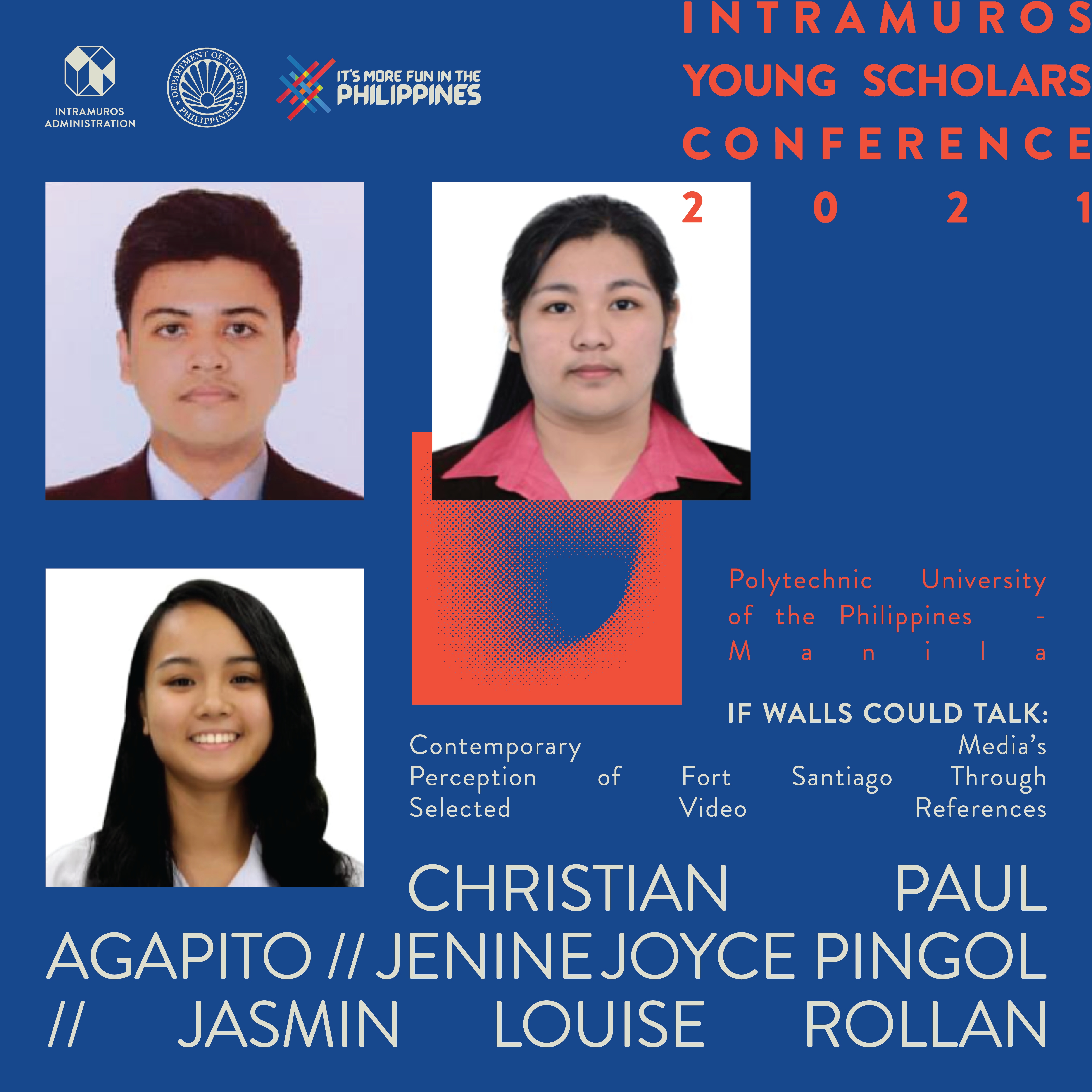 |
Abstract
The mainstream media, typically in the form of documentaries or news features, is considered an effective tool in reaching countless audiences due to its accessibility. Due to this, it is often used to transmit stories, narratives, or even agendas about a certain subject or place. Nowadays, the emergence of social media, especially in recent years, makes sharing anything in cyberspace easier than ever. Alongside is the popularity of video blogs (vlogs), which are often used to share personal travel experiences and perceptions about the places visited. Popular historic sites and tourist attractions such as Fort Santiago tend to be often found in travellers’ itineraries. Therefore, it has also been a subject of numerous vlogs and documentaries. In this regard, the research entitled “If Walls Could Talk: Contemporary Media’s Perception of Fort Santiago Through Selected Video References,” aims to identify circulating perceptions and the factors that contribute to the proliferation of these narratives on Fort Santiago by examining amateur travel vlogs and professionally crafted documentaries, virtual tours, and lectures posted on Youtube. Walter Fisher’s Narrative Paradigm will be used to support the claim of this research that the narratives formed from the selected video references can influence the overall imagery of Fort Santiago. This research used the qualitative approach by utilizing the empirical analysis to examine and interpret the contents of the selected video references. Given these results, while also taking into consideration the ever-growing reach and popularity of social media usage, it is evident that the overall imagery of Fort Santiago is being affected by the popularity and circulation of vlogs and documentaries in cyberspace. Although there have been similarities in the observed recurring themes from both categories, their distinctiveness is still evident and retained.
Keywords
Fort Santiago; Vlogs and Documentaries; Recurring Themes and Factors; Narrative Paradigm.
Panel Discussants
- Wayne Winter J. Uyseco, M.A., Far Eastern University Manila
- Jame Monren T. Mercado, M.C.H.S., University of Santo Tomas Manila
About the Authors of Paper no. 5
Christian Paul Agapito is a third-year student of Bachelor of Arts in History at the Polytechnic University of the Philippines-Manila. His research interests are Pre-16th Century Philippines, Maritime History, the Philippine Revolution, and Economic History. He is a consistent Dean’s and President’s lister and an active member of the PUP Department of History’s Samahang Mag-aaral ng Kasaysayan (SMK) since 2018.
Jenine Joyce Ella Mae Pingol finished her primary education in Baloc Elementary School, while she finished her secondary education in Santo Domingo National Trade School. Both schools are in the humble province of Nueva Ecija. Currently, Miss Pingol is in her third year of taking her Bachelor of Arts in History degree at the Polytechnic University of the Philippines. As a young student, her interest involves military history especially with the role of Nueva Ecija (her home province) in the revolution of 1896. She also has an interest in military tactics and weaponry as well as battle formations and strategies.
Jasmin Louise Rollan is a third-year college student in the Polytechnic University of the Philippines Manila under the Department of History. Her research interests include the study of Pre-16th Century Philippine Cultures, Archaeology, Social History, and Southeast Asian History. She is currently a contributing member of the Committee on Development which oversees the planning and improvement of previous activities for better execution of the department’s events. She has already been involved in planning and hosting conferences, roundtable discussions, and forums organized by the said department. Last 2019, she presented a research paper entitled “Anti- Clericalism in the Late 19th Century Manila: The Triangulo de los 33 and the Manifestation of 1888” in the 5th National Conference on Local and Oral History held in the Polytechnic University of the Philippines Manila’s Bulwagang Bonifacio.
Panel Discussants
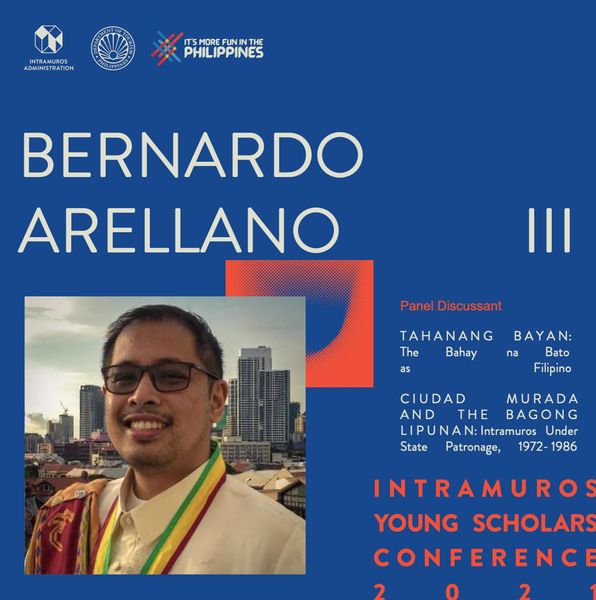
Bernardo Muerong Arellano III finished his bachelor’s degree in History at the University of the Philippines Iloilo, and Master of Science in Geography at the University of the Philippines Diliman. He began teaching at the College of Arts and Sciences of UP Los Baños in 2019, teaching courses on the Life and Works of Jose Rizal and Philippine History. He is also the Program Development Associate for Cultural Heritage at the Office for Initiatives for Culture and the Arts (OICA) at the said university. He was the project coordinator of the Philippine Registry of Cultural Property under the National Commission for Culture and the Arts. His research interests include local histories, sense of place and place-making, and cultural heritage studies. His undergraduate thesis, “Ang Pagpangayaw sa Dutang Ginsaad: The Migration of Settlement of Ilonggos in Tacurong, Cotabato 1951-1960s” delved into the local histories and personal stories of the Ilonggo emigration to Central Mindanao after the Second World War. His master’s thesis explored what constitutes “Sense of Place” in the City of Vigan, Ilocos Sur, a popular heritage site and tourist destination.
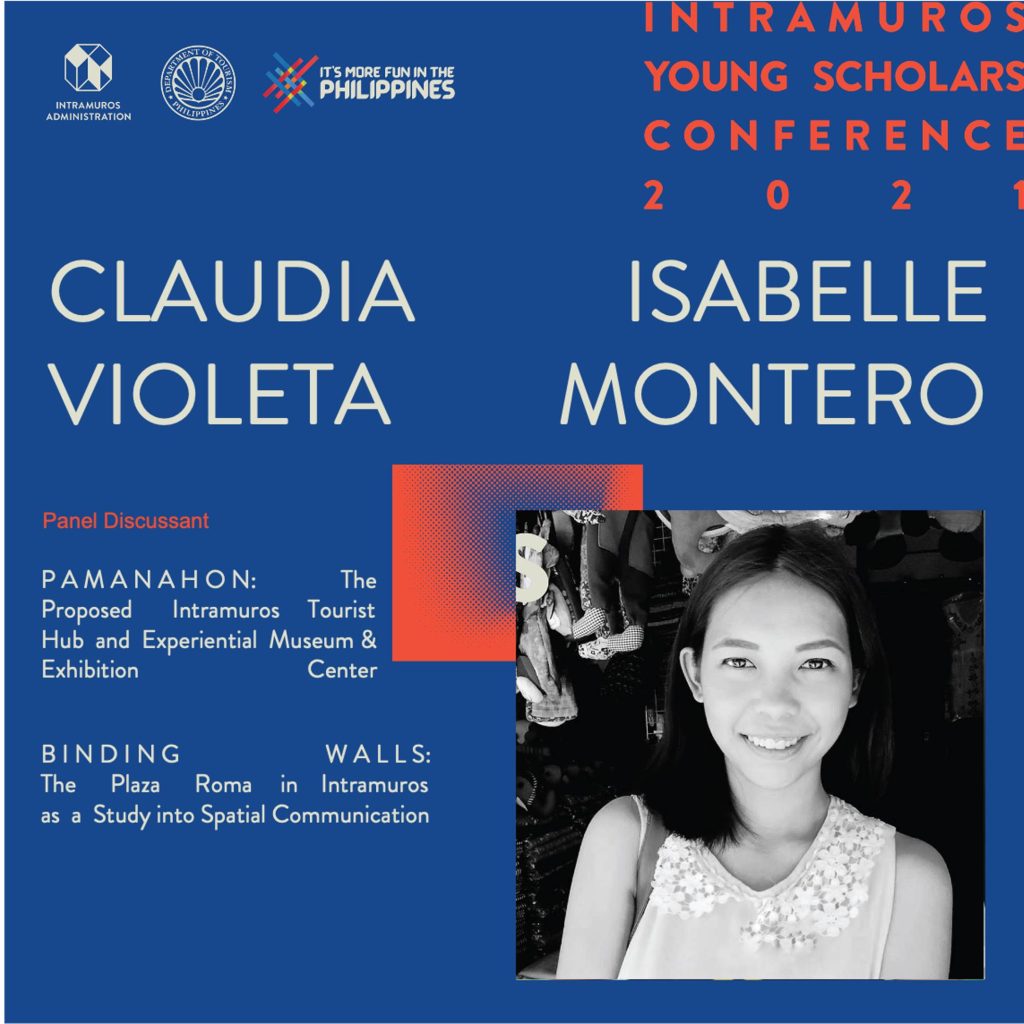
Claudia Isabelle Montero is currently a PhD student in the Department of History at The Chinese University of Hong Kong. Her MPhil thesis focused on the role of history and culture towards built heritage protection, where it investigated how the 2009 National Cultural Heritage Act has been interpreted and implemented in Manila, Philippines. Her main academic interests are in history and historiography of colonial urban spaces (in the Philippines), built heritage, and heritage conservation practice. She is additionally interested in the articulation of the national politics of memory and identity. In 2018 she was a Junior Fellow for the Global Humanities Campus at the Freie Universität Berlin in Germany. An active member of the International Committee for Monuments and Sites (ICOMOS), she has been involved in several heritage activities in the Philippines. She is a licensed architect and a conservator of historic buildings with applied experience in research documentation and condition survey assessment. She has worked extensively with nonprofit organizations, private clients and government agencies in the Philippines involving research and consultancy in the study of materials, methods, conservation, and restoration works. Additionally, she worked as a project architect for the National Museum of the Philippines in 2013, which aided in the supervision of the restoration works of several National Cultural Treasures in the Philippines.
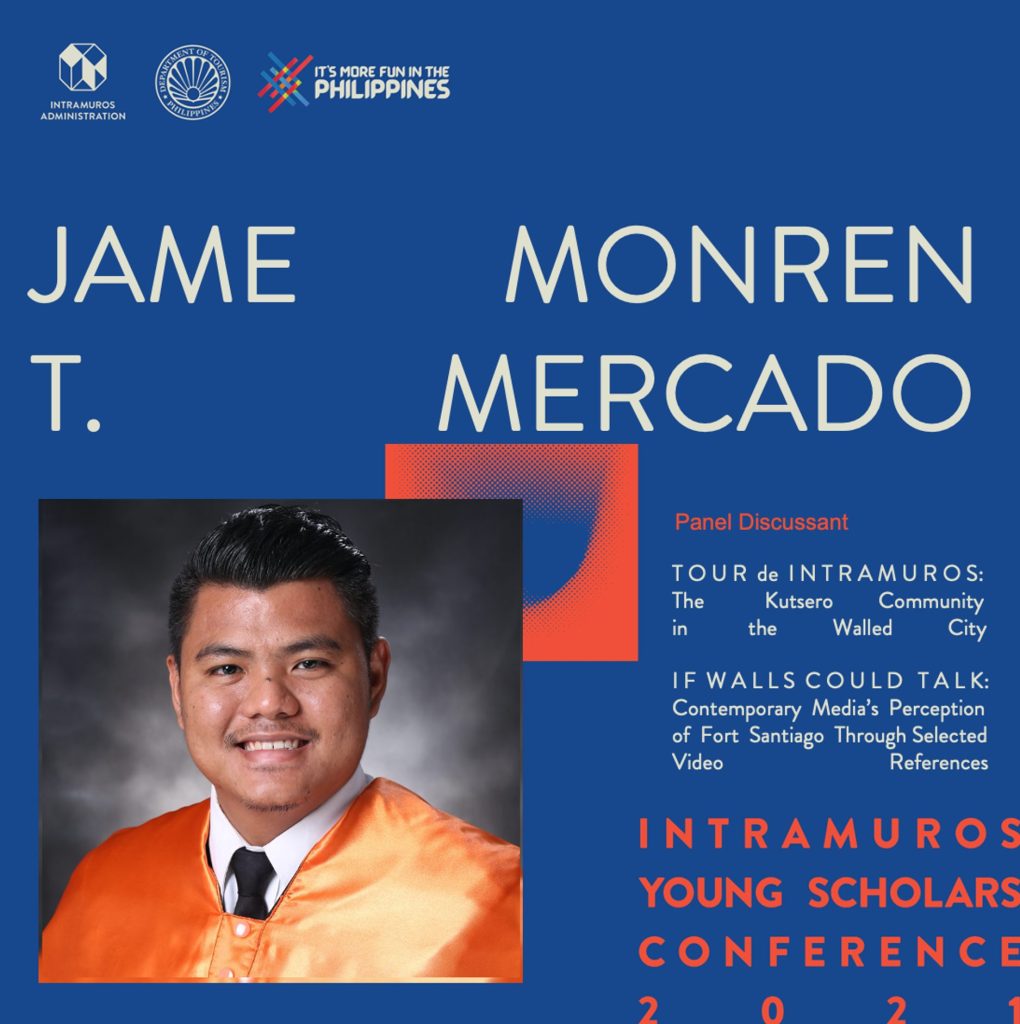
Jame Monren Mercado is a researcher. He is currently the Research Coordinator at the University of Santo Tomas College of Tourism and Hospitality Management where he is also teaching cultural and heritage tourism. He has an MA in Cultural Heritage Studies from the University of Santo Tomas and a BS in Hospitality Management from the Colegio de San Juan de Letran. A prolific researcher, Jame is well published in journals and other publications locally and internationally. He is at present a member at the International Council on Monuments and Sites Philippines.
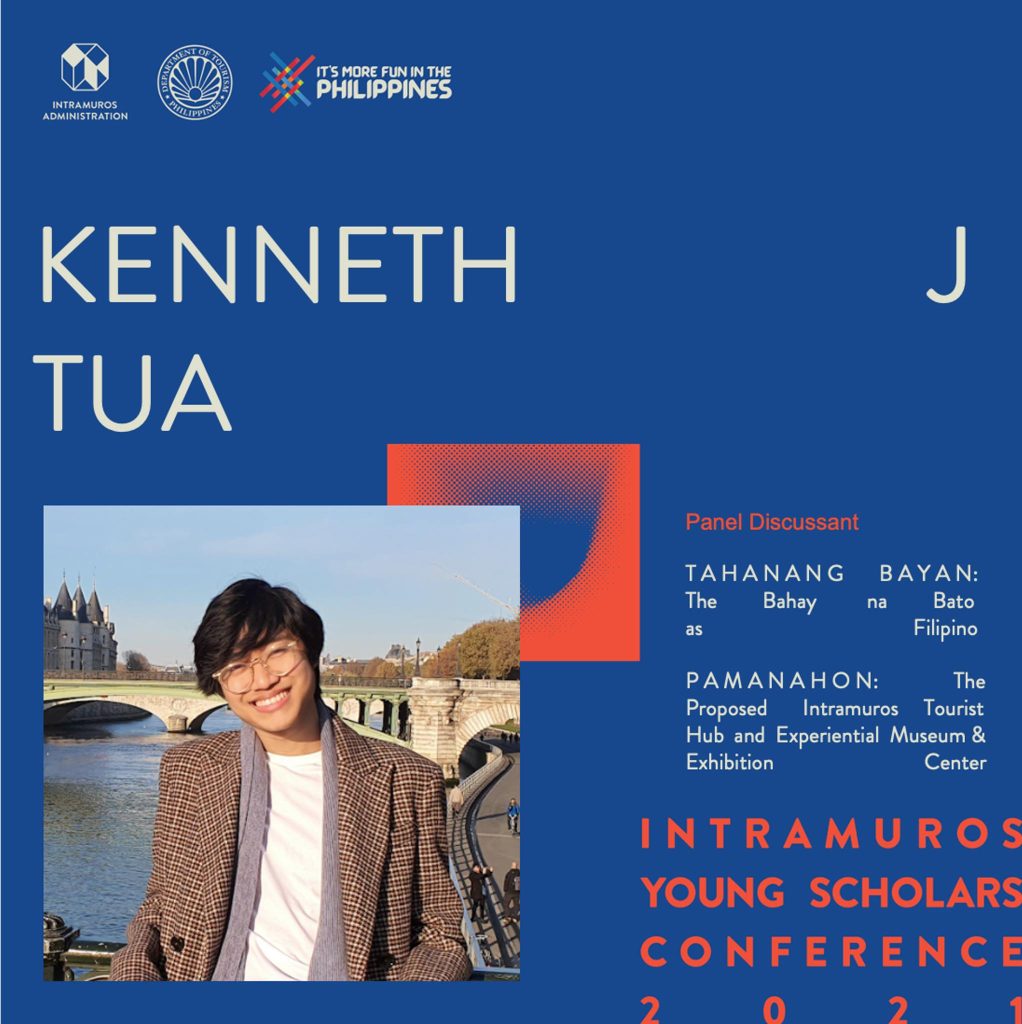
Kenneth J. Tua is a registered & licensed architect, a sustainable territorial development consultant, and a heritage conservation and management practitioner based in the Philippines. He graduated Bachelor of Science in Architecture at the Pontifical and Royal University of Santo Tomas – College of Architecture and have acquired professional certifications as a fully – funded scholar in Sustainability, Sustainable Development, and Innovation programmes from YSISEA in Singapore, APYE in Thailand and Social Innovation Center, Hanyang University, South Korea. He previously worked with private companies such as HBA and RMDA, and the Philippine government through the Office of the President of the Republic of the Philippines – Pasig River Rehabilitation Commission (PRRC). Likewise, worked as a sustainability consultant on NGOs and classified government projects nationwide. Recently, he was a Postgraduate Researcher – Intern for Disaster Risk Management of Cultural Heritage at the Southeast Asian Ministers of Education Organization (SEAMEO) – Regional Centre for Archaeology and Fine Arts (SPAFA), Bangkok, Thailand, and graduated as a fully – funded Erasmus+ scholar at the Erasmus Mundus Joint Master Degree (EMJMD) in DYnamics of Cultural Landscape, heritage, Memory and conflictualities (MSc – MA DYCLAM+) and Master of Arts in Cultural Diplomacy and International Relations (MA CDIR) by the European Union. Currently, he is an independent consultant, works in an NGO as a Policy Guidance Manager / Task Team Coordinator at the International Council on Monuments and Sites (ICOMOS) Philippines – Sustainable Development Goals Working Group (SDGsWG), and a Philippine Committee member of the International Scientific Committee on Cultural Landscapes (ISCCL).
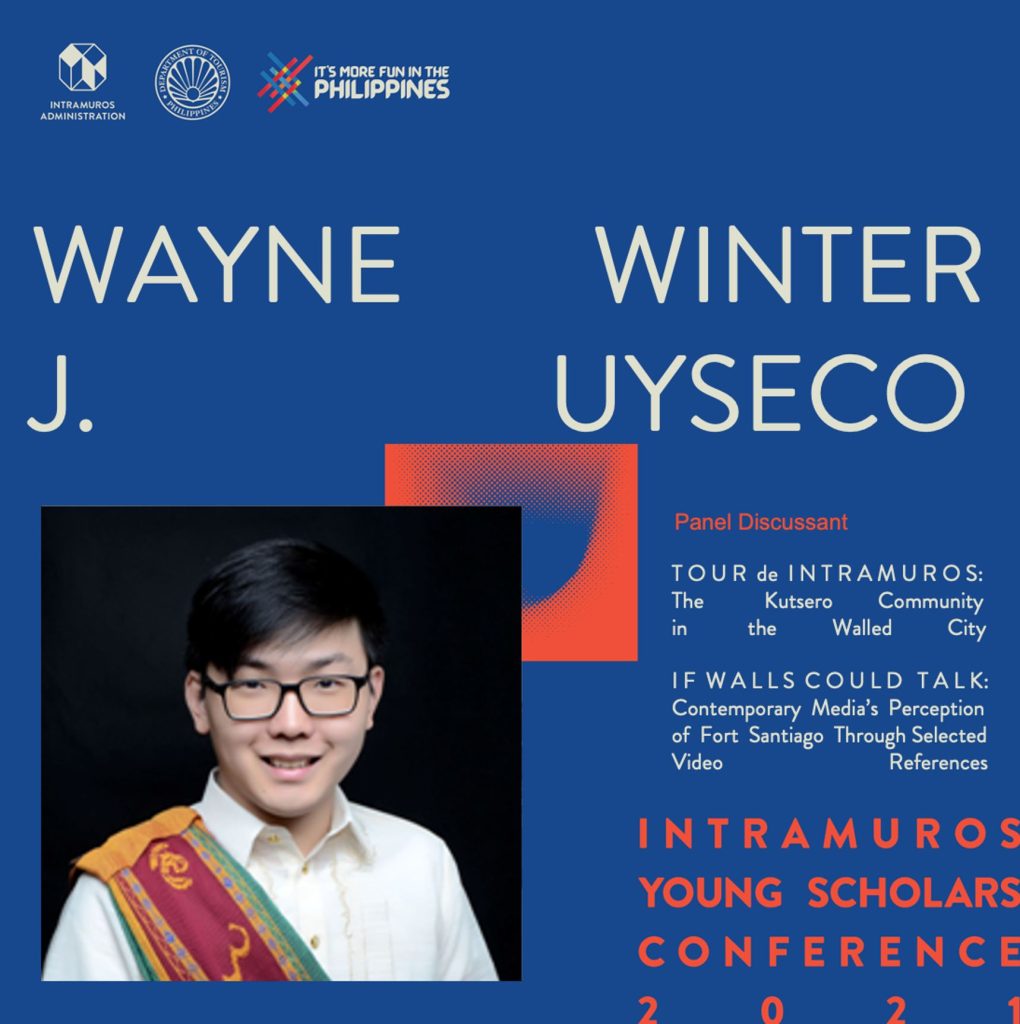
Wayne Winter Jao Uyseco is currently faculty member at the Far Eastern University Manila where he is also the Coordinator for Digital Content Creation and Development as well as the Coordinator for General Education. He was previously a lecturer at the University of the East Caloocan, the Every Nation Language Institute, and the World Citi Colleges Caloocan. His Bachelor of Arts in Asian Studies is from the University of Santo Tomas Manila, while his Master of Arts in Asian Studies is from the University of the Philippines Diliman Asian Center. He is currently taking up his PhD in Development Studies at the De La Salle University Manila.

Elgin Glenn Salomon is a researcher with specialization on Philippine studies, social history, postcolonial studies, and subaltern theory. He has published and presented papers locally and internationally on various subjects ranging from colonial urban planning to subaltern resistance, and is presently an instructor of history at the University of the Philippines Visayas. He earned his BA in History and Sociology from the same university, and is presently finishing his MA in Philippine Studies (Socio-cultural studies) at the University of the Philippines Diliman.
For more information contact the Center for Intramuros Studies via [email protected]
Cannot find what you are looking for? Try requesting for more data via our eFOI Portal.







